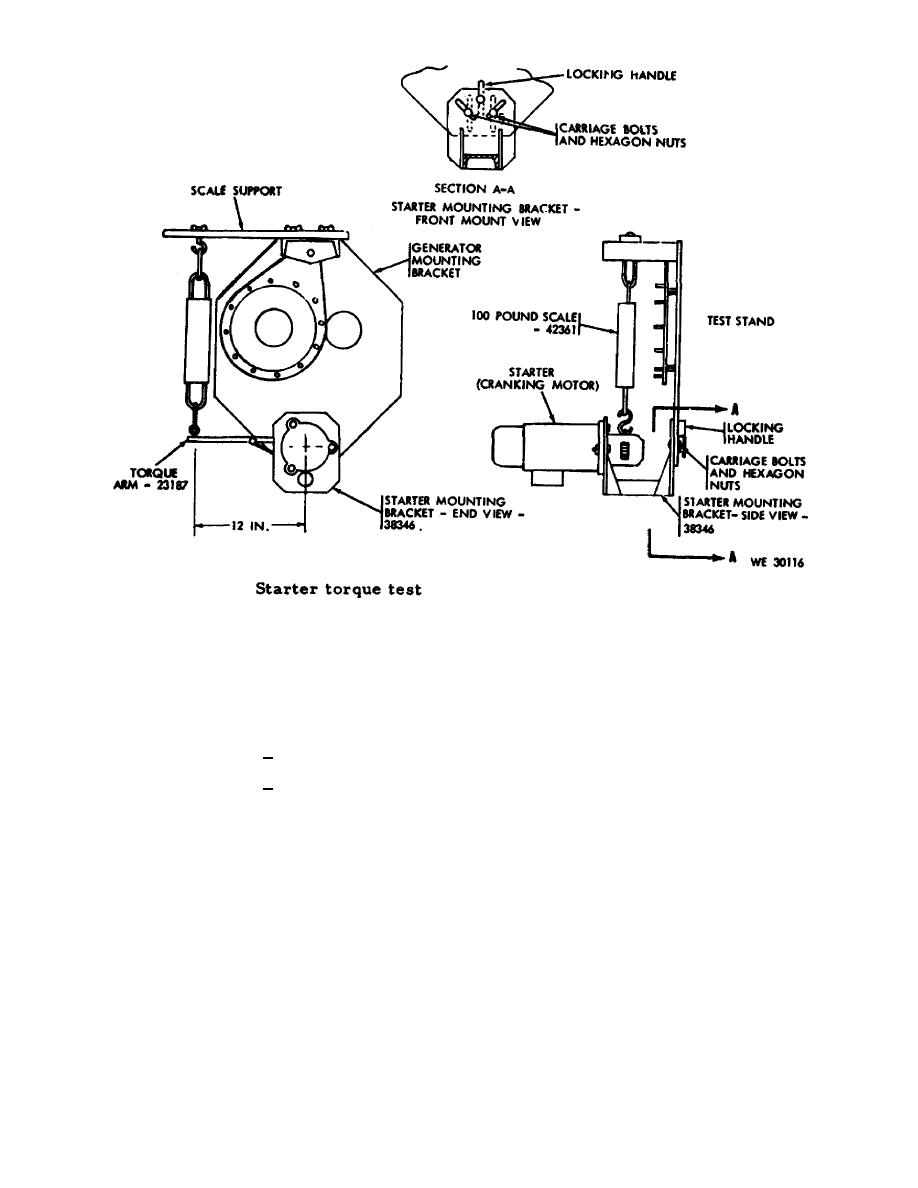
Figure 32.
Starter torque test.
(d) The starter is activated by turning the starter switch (27) to
the ON position. A hand tachometer is used to measure the starter RPM.
(e) Vary starter voltage adjuster control (24) until a voltage of
22.0 volts is obtained on the DC voltmeter.
1.
The minimum speed should be 7,000 RPM.
2.
The maximum current draw should be 90 amperes.
(2) The stall torque test (fig 34) is performed to determine the amount
of torque, in foot-pounds, exerted by the starter when under load. This test must
be short in duration and the torque arm must be securely attached with the scale
support bolted down securely (fig 32).
(a) Figure 34 shows the connections to the 500-ampere test stand.
shunts. Since the starter is not allowed to turn, it doesn't build up any back
EMF. Therefore, the starter will have a very low resistance and cause an extremely
high current drain.
OS 010, 6-P26



 Previous Page
Previous Page
